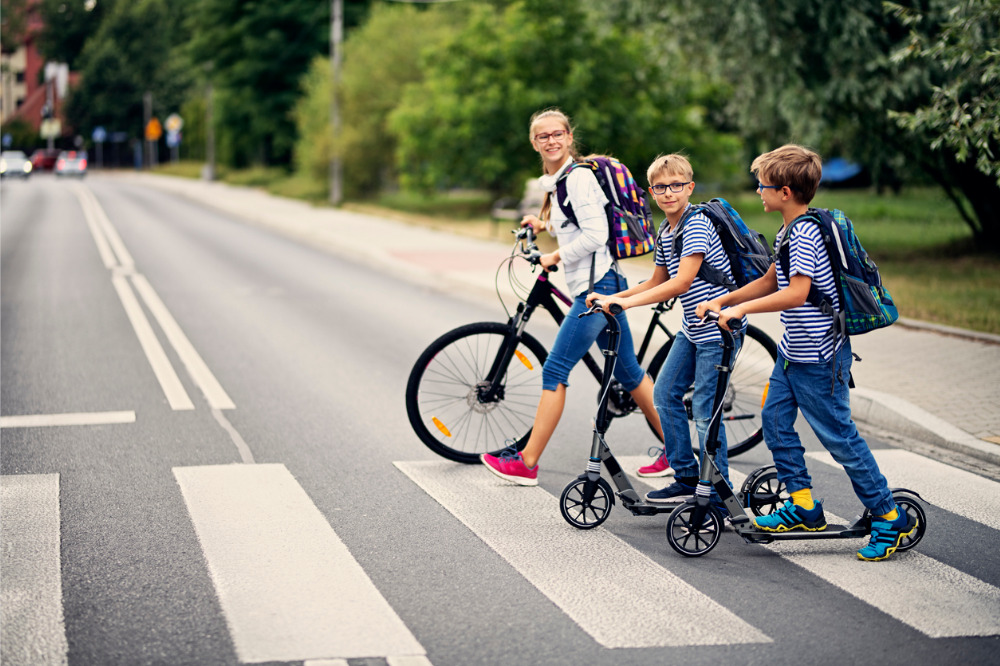
Tomorrow marks National Ride2School Day – an occasion that sees students across Australia ditch the school bus to walk, ride, scoot or skate to school.
Studies have shown that when students come to school this way, they arrive more energised, alert and ready to learn.
The Department of Health recommends 60 minutes of physical exercise each day, an increasingly important message as reports paint an alarming picture of a sedentary, screen-obsessed generation.
Data from the Australian Institute of Health and Welfare in 2019 found that 25% of Australians aged 2-17 in 2017-2018 were either overweight or obese. This further increases the older Australians get – with 67% of adults being either overweight or obese in the same period.
Several experts have come out in support of National Ride2School Day, saying it provides an opportunity for schools to push the importance of physical exercise to the young people in their care.
Chris Hickey is a Professor in Health and Physical Education, and Chair of the Academic Board at Deakin University. He is also Editor-in-Chief of Curriculum Studies in Health and Physical Education.
He says the importance of National Ride2School Day needs to be read against widespread social concerns associated with profiling of young people characterised by, increasing amounts of screen time and decreasing levels of physical activity.
"The success of the day is not only measured by the number of young people who ride their bikes or scooters to school, but also in its power as a consciousness-raising event,” Professor Hickey recently told MCERA.
"It provokes us to think about the place of physical activity in our daily lives and the potential value of active transport. Sadly, for many parents the day often brings a realisation that not only does their child not have a functioning bike, but that they probably couldn’t ride it safely if they did”.
Jan Garrard, is a senior lecturer in the School of Health and Social Development at Deakin University. Her research interests are in physical activity, active transport, and cycling safety.
"The list of benefits of riding to school just keeps on growing," Dr Garrard said.
"The health benefits of physical activity for children are well-established, as are the environmental, community liveability and transport efficiency benefits of replacing car trips with cycling trips."
Dr Dean Dudley, a Senior Lecturer and Researcher of Health and Physical Education at Macquarie University, said the promotion of physical activity in youth should be encouraged by parents, teachers, and broader education stakeholders.
"Walking or cycling to and from school consistently shows that it makes an important contribution to a young person’s overall physical activity levels, and those students who walk or cycle to school are more physically active than those who are driven by parents or commute via public transport,” he said.
"Social factors (such as how close knit the community is in which the families live) and physical environmental characteristics(such as having designated bike lanes and footpaths) are frequently cited as the most important predictors of whether students are likely to actively commute to and from school”.
Ashley Brehaut is a PE teacher at St Leo the Great Primary School, which will be participating in the program.
Brehaut said the school fluctuates between 15-25% active travel participants – around 25 riders/scooters/skaters/ and about 30 walkers.
“We find there is a huge benefit in reducing the traffic around the school and keeping students safe,” Brehaut told The Educator.
“They are also more alert after being active on the way to school. We have even had parents meet up before school which has been a huge part of growing our school community”.
Brehaut offered some advice to students who are thinking about riding to school for the first time.
“Riding to school, being active on the way to school is beneficial for education, health and building confidence in the students,” he said.
“As long as it is done in a safe manner, there really are no safety concerns”.


